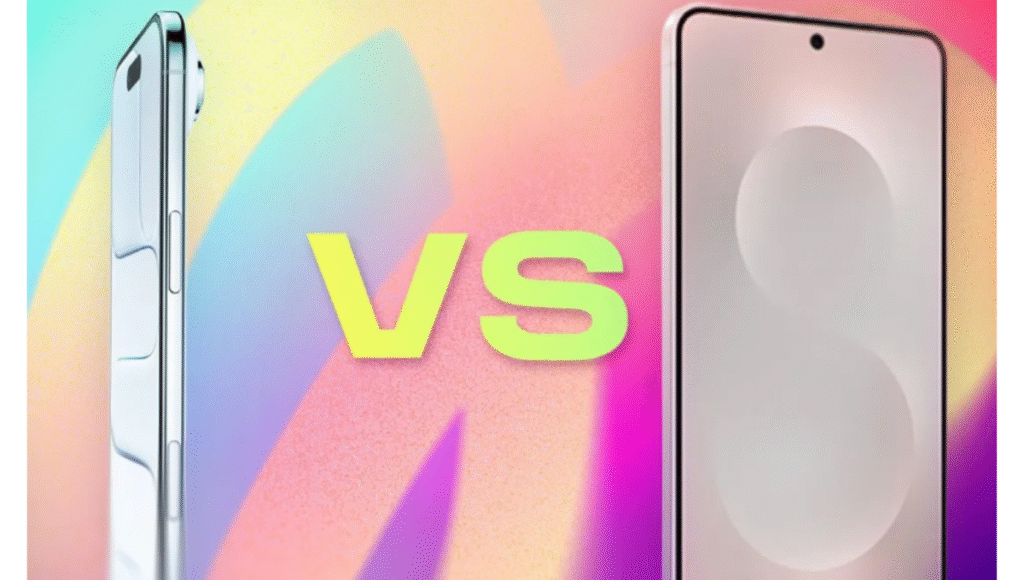
iPhone Air vs. Galaxy S25 Edge: The Battle of Slim Smartphones
In today’s smartphone world, thin is in. For years, brands have focused on cramming in bigger batteries, advanced cameras, and AI-powered features, often making devices heavier and bulkier. But 2025 has brought a refreshing change. Apple and Samsung, the two biggest names in the industry, have shifted their focus toward slimmer and sleeker designs, offering users premium devices without the bulk of their flagship pro-level models. Enter the iPhone Air and the Galaxy S25 Edge—two smartphones that are winning hearts not just with their power but with their elegance.
Many people who once walked into Apple stores dreaming of the top-tier iPhone 17 Pro are now leaving with the iPhone Air. Likewise, Samsung enthusiasts who were eyeing the Galaxy S25 Ultra are surprisingly opting for the Galaxy S25 Edge instead. What’s driving this change? It’s the blend of powerful features packed inside designs that feel lighter, thinner, and more stylish in the hand. Let’s dive into how these two devices compare and why they may just redefine what we expect from smartphones.
Price and Value: Thinness at a Cost
The iPhone Air starts at $999, a price that mirrors Apple’s tradition of charging a premium for design innovations. It replaces the iPhone 16 Plus, making it the go-to option for those who want a larger screen without stepping up to the Pro models. With a 256GB base storage and the cutting-edge A19 Pro processor, it’s more than just a thinner phone—it’s Apple’s statement that slim doesn’t mean underpowered.
On the other hand, Samsung has priced the Galaxy S25 Edge at $1,100. While slightly more expensive, its unique positioning in the Galaxy lineup has caught attention. With a 6.7-inch AMOLED display, dual rear cameras, and Snapdragon 8 Elite processor, Samsung makes a case for design-conscious buyers who also want extra performance. And with frequent discounts, the Edge is already becoming a tempting option.

Design and Dimensions: The True Slim Champions
Apple’s iPhone Air measures just 5.64mm thick (excluding the camera bump), while Samsung’s Galaxy S25 Edge comes in close at 5.8mm. Compared to the standard iPhone 17 at 7.9mm and the Galaxy S25 at 7.2mm, the difference is dramatic. In the hand, these devices feel refreshingly light and sleek.
Weight-wise, the iPhone Air tips the scales at 165 grams, while the S25 Edge is slightly lighter at 163 grams. The slim profiles make both phones easy to carry, slide into a pocket, or use for extended periods without fatigue.

Display Experience: Brightness Meets Brilliance
Apple equips the iPhone Air with a 6.5-inch Super Retina XDR OLED display, boasting a resolution of 2,736 x 1,260 pixels and a remarkable 3,000 nits of peak outdoor brightness. Whether under harsh sunlight or in the dark, the display adapts beautifully to its environment.
Samsung answers with a larger 6.7-inch QHD+ Dynamic AMOLED 2X display with a resolution of 3,120 x 1,440 pixels and up to 2,600 nits brightness. The higher pixel density of 513 ppi makes the S25 Edge razor-sharp, perfect for binge-watching videos or playing games with immersive clarity.
Both phones support 120Hz adaptive refresh rates, ensuring smooth scrolling and seamless performance.
Camera Showdown: Simplicity vs. Versatility
Apple keeps things simple with a single 48MP wide camera on the iPhone Air. Thanks to its fusion imaging process, it produces detailed 24MP shots that balance sharpness with vibrant colors. It even delivers clean 2x zoomed shots by cropping into the sensor. For selfies, the Air introduces an 18MP Center Stage front camera, smartly adapting its frame whether you’re snapping solo or with friends.
Samsung’s Galaxy S25 Edge, however, brings in more versatility with a 200MP wide camera paired with a 12MP ultrawide lens. While it lacks a dedicated telephoto camera, the 2x zoom cropping is decent for casual photography. Its 12MP front camera delivers sharp selfies, though it doesn’t carry the adaptive framing trick Apple has introduced.
For creators and casual photographers alike, the Galaxy S25 Edge shines with its dual-camera flexibility, while the iPhone Air bets on refinement and computational photography.
Battery and Performance: A Trade-off for Thinness
When it comes to slim phones, battery life is always the concern. Apple doesn’t disclose the iPhone Air’s battery size, but claims up to 27 hours of video playback. Real-world tests suggest it lasts a full day under normal use, though heavy users might find themselves reaching for Apple’s specially designed MagSafe battery pack.
Samsung gives numbers upfront—the S25 Edge packs a 3,900mAh battery with support for 25W wired charging and 15W wireless charging. It comfortably delivers all-day battery life, though its slimmer body naturally leaves less room for bigger cells.
Performance-wise, the iPhone Air’s A19 Pro chip gives it blazing-fast power, rivaling even the Pro iPhones. Meanwhile, Samsung’s Snapdragon 8 Elite processor and 12GB RAM ensure smooth multitasking and gaming on Android 15. Both phones come with 256GB base storage, with higher options available.
The Verdict: Which One Should You Buy?
Choosing between the iPhone Air and Galaxy S25 Edge depends on what you value most. The iPhone Air offers Apple’s ecosystem, a sleek design, a reliable single camera, and cutting-edge performance. It’s perfect for users who prefer simplicity and premium craftsmanship.
The Galaxy S25 Edge, meanwhile, is slightly bigger, packs more camera versatility, and caters to Android lovers who want a stylish phone without compromising too much on features.
Both phones redefine what a slim smartphone should be in 2025: powerful, stylish, and capable enough to be your daily driver without feeling like a “lite” version of their flagship siblings.
Disclaimer
This article is based on publicly available information and reviews. Features, pricing, and performance may vary depending on region, model, and updates. Always check with official sources and authorized retailers before making a purchase decision.




